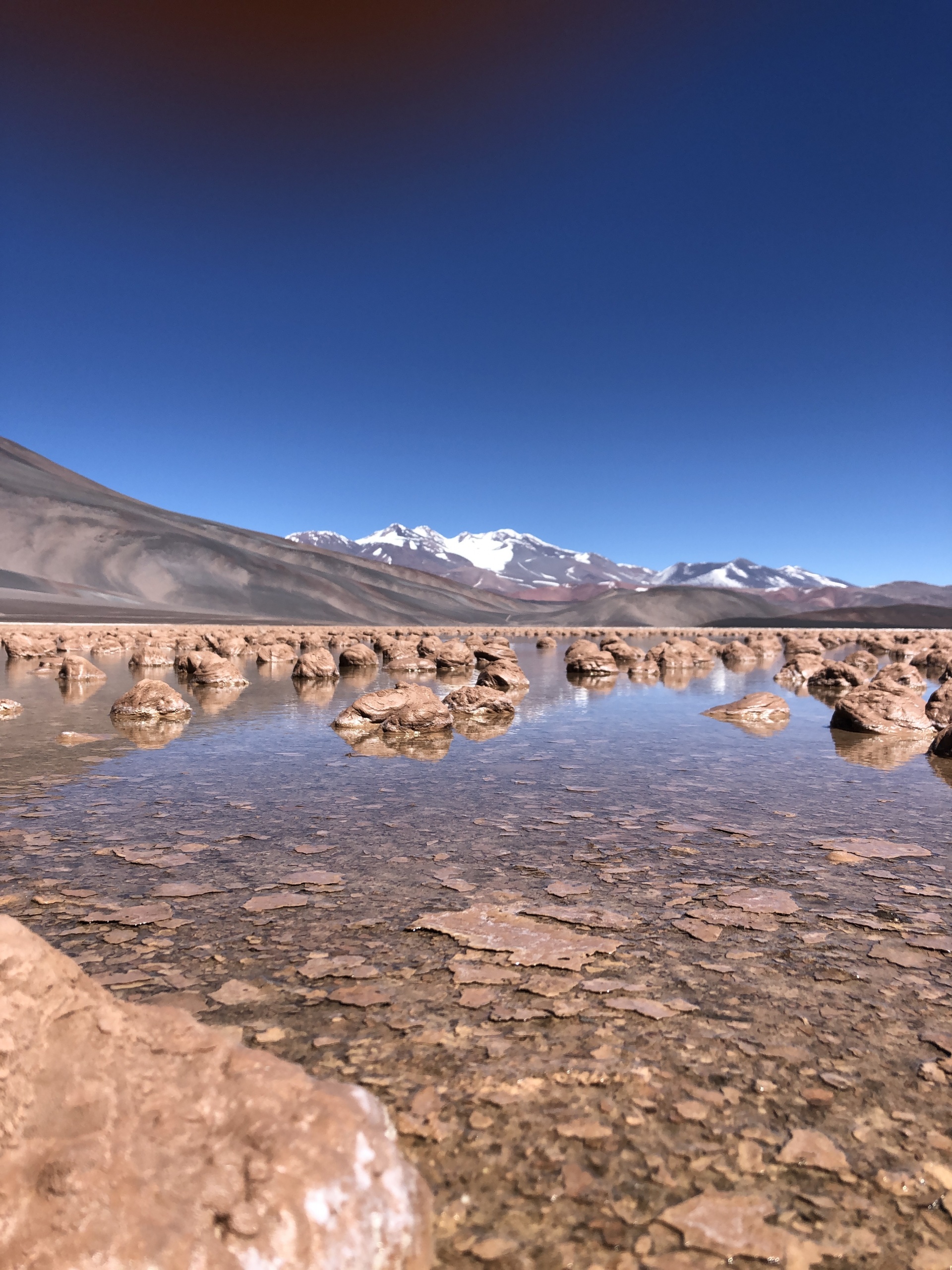TA1 Facility 6 – Argentinian Andes
Average visit: 1 week
Cold, extreme glacial and lacustrine environments of the Andes of Argentina Puna region: Dry-cold environments
The high-altitude Puna Plateau (4000-6000 m above sea level) of Northwest Argentina (Salta, Jujuy and Catamarca provinces, 22-28º SL) is subject to a cold, arid climate. The area is characterized by hundreds of hypersaline lakes, glaciers, rock glaciers, hydrothermal systems, and environmental extremes with high-UV influx, low water activity, extreme daily temperature fluctuations (> 40ºC), strong winds (gravel dunes due to winds up to 400 km/h, Puruya and Carachi Pampa areas), and volcanic-dominated geological settings. All these features make the region ideal as a planetary analogue for Mars and other icy planets/moons environments. There are notable interactions between hydrothermal systems, hypersaline lakes and glaciers, both ice and rock. Given the extreme environments, when present, life is typically microbial. Locally preserved stromatolites and other microbial carbonates also record evidence of life forms under current and past climate conditions.
- The Laguna Negra lake is one example of hundreds of similar wetlands in the region. Located at the southeast end of the Laguna Verde Complex (LVC), in the southernmost Puna, the Laguna Negra is a shallow (2 m deep) hypersaline lake (8.63 km2). It comprises a CaCl2-rich brine, with compositions in the main lake and groundwater springs fluctuating between pH of ~ 5.7 and ~ 8 and a salinity between ~ 320 and ~ 9 ppt respectively. The mixing zone between the main lake and groundwater is where most microbial carbonate precipitation takes place (calcite & aragonite). Published research in the area [Gomez at al. 2018] has characterised the sedimentology, biogeochemistry and geomicrobiology.
- The high-altitude cryosphere: High-altitude, cold and arid climate conditions limit the presence of glaciers and the ice is mainly present underground (permafrost). The glaciers have characteristics that make them of particular interest as planetary analogues. They are small (typically >1 km2), situated far above the 0ºC isotherm altitude, and have limited flow. Active rock glaciers represent the most widespread features of the permafrost environment and are found above 4500 m above sea level. Analogous features have been recorded on Mars. Since 2010, the superficial flow and climatic conditions of three rock glaciers in northwest Argentina have been monitored.
Patagonia and Tierra del Fuego region: Wet-cold environments
The Patagonia region shows records of glacial activity since the late Miocene (c. 7 My). Today, the Southern Patagonia Ice field (48-52º SL) is the largest extra polar ice mass (13,000 km2) in the Southern Hemisphere (40-60 km wide and 120 km long). Numerous temperate outlet glaciers flow from the ice field and terminate on land, sea or lakes. Glaciers on the windward site are fed by high precipitation from Southern Westerlies. Precipitation decreases sharply on the eastern side of the Andes generating arid condition in the Patagonian steppe where numerous small endorreic lakes develop. Some of these lakes record microbial life and its mineralised record (stromatolites) in an environmental setting different to the Puna area. The last 16,000 yr of Patagonian glacier history (post Last Glacial Maximum deglaciation) is being characterised for world-wide correlation. To understand the present glacier behavior, the ice mass balance of the Martial Glacier has been monitored since 2000 along with two rock glaciers in the Cordillera Fueguina in Tierra del Fuego.
Contact:
Dr Fernando J Gomez, CICTERRA-Centro de Investigaciones en Ciencias de la Tierra, Velez Sarsfield 1611, Piso 2, Of. 4, Ciudad UniversitariaZip Code X5016GCA – Córdoba – Argentina. Email: fjgomez<at>unc.edu.ar
Website: TA1 PFA Argentina Andes facility website



Report summaries of TA visits to facility
Back to the TA1 Planetary Field Analogues Page












